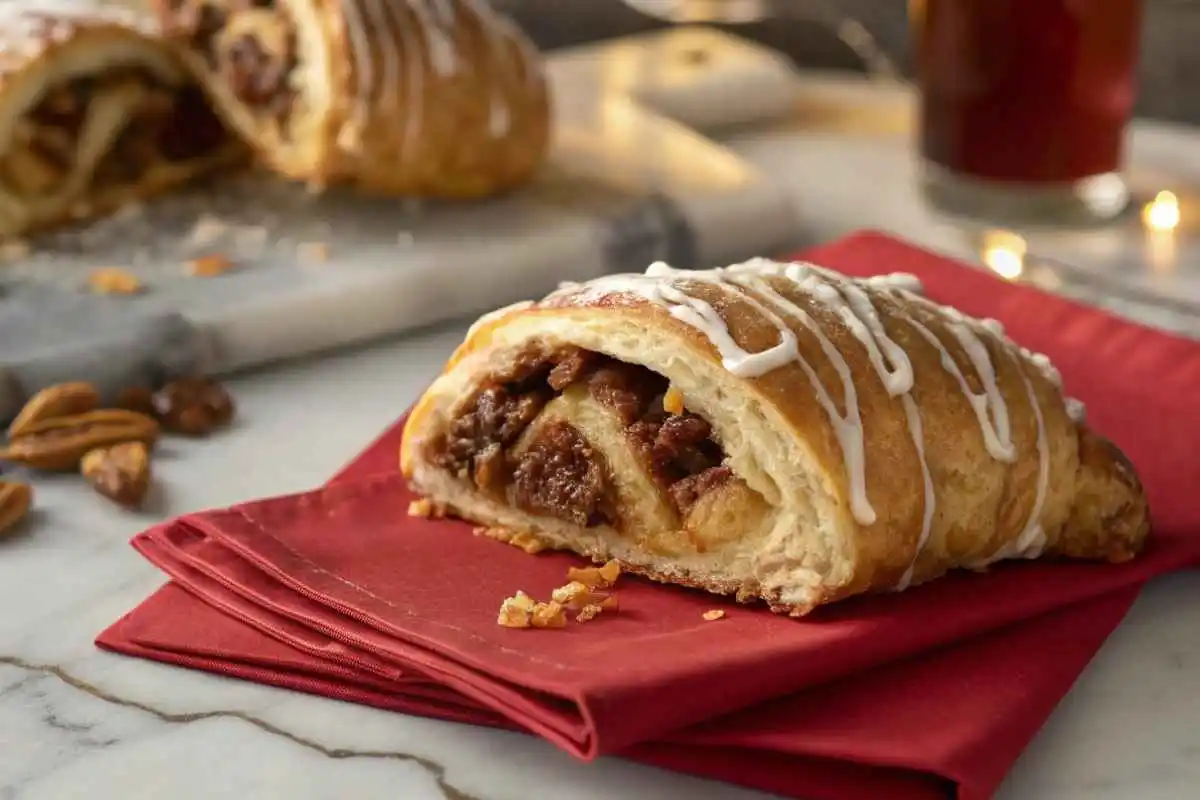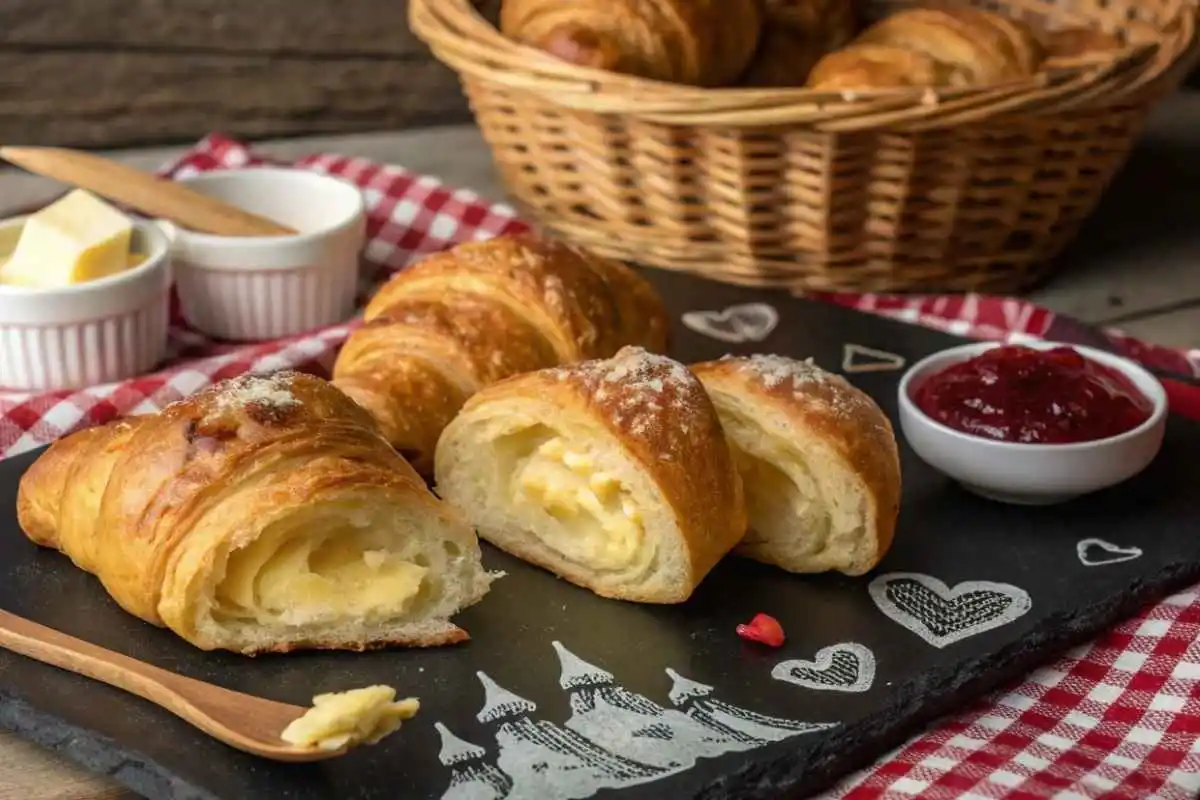Baking at home is a rewarding experience, and few treats rival the buttery, flaky goodness of a freshly made gipfeli. Known as the Swiss cousin to the French croissant, this crescent-shaped pastry is a breakfast staple that’s easier to make than you might think. In this article, we’ll guide you through the steps to create your own gipfeli recipe, share tips for perfection, and explore why this delightful pastry deserves a spot in your kitchen. Get ready to roll up your sleeves and fill your home with the irresistible aroma of freshly baked goods!
Why a Gipfeli Recipe Is a Must-Try for Bakers
There’s something magical about transforming simple ingredients into a golden, flaky pastry. A gipfeli recipe offers that magic with a Swiss twist—think lighter layers and a subtle sweetness that pairs perfectly with coffee or jam. Unlike its richer French counterpart, the gipfeli is often less butter-heavy, making it a versatile treat for any time of day.
What sets this pastry apart is its balance of crispiness and tenderness. It’s a hands-on project that rewards patience with every bite. Plus, baking at home lets you control the quality of ingredients, as noted by the American Heart Association, which emphasizes how homemade foods can support better health. With a gipfeli recipe, you’re not just baking—you’re crafting a tradition.
Unpacking the Basics of a Gipfeli Recipe

At its core, a gipfeli recipe relies on a laminated dough process—folding butter into flour to create those signature layers. Don’t let the term “lamination” intimidate you; it’s just a fancy way of saying you’ll layer and roll the dough a few times. The result? A pastry that puffs up beautifully in the oven.
The process starts with a yeasted dough, which gives gipfeli its slight rise and soft interior. You’ll need flour, yeast, sugar, salt, milk, and, of course, butter—the star of the show. Each step builds on the last, so take your time. The reward is a tray of golden crescents that rival any bakery’s offerings.
Step-by-Step Guide to Your Gipfeli Recipe
Ready to bake? Here’s how to master a gipfeli recipe at home. Start by activating your yeast in warm milk with a pinch of sugar—about 5 minutes until it’s foamy. Mix it with flour and salt to form a soft dough, then let it rest. This initial rise, or proofing, is key for texture.
Next, roll out the dough and add a thin layer of butter. Fold it like a letter, roll again, and repeat. This creates the flaky layers. After chilling the dough to keep the butter firm, shape it into triangles, roll them into crescents, and let them proof again. Bake until golden, and you’ve got perfection. For a detailed breakdown, King Arthur Baking offers a great primer on lamination techniques.
Tips to Perfect Your Gipfeli Recipe

Success lies in the details. First, keep your butter cold—soft butter melts into the dough and ruins the layers. Work in a cool kitchen or chill the dough between folds. A rolling pin and a light touch are your best friends here.
Timing matters too. Don’t rush the proofing stages; the dough needs time to relax and rise. Aim for a warm, draft-free spot—around 75°F is ideal, according to baking science from The Spruce Eats. Lastly, brush your gipfeli with an egg wash before baking for that glossy, golden finish.
Common Mistakes to Avoid with a Gipfeli Recipe
Even seasoned bakers stumble. Overworking the dough is a big no—no one wants a tough pastry. Knead just until smooth, then stop. Another pitfall is skimping on chilling time. Warm dough leads to greasy, flat gipfeli instead of airy layers.
Watch your oven temperature too. Too low, and the butter melts out; too high, and the outside burns before the inside cooks. Stick to 400°F for a balanced bake. Avoid these hiccups, and your gipfeli recipe will shine every time.
Flavor Variations for Your Gipfeli Recipe
Why stop at classic? Elevate your gipfeli recipe with creative twists. Add a sprinkle of cinnamon sugar before rolling for a sweet kick, or stuff them with almond paste for a marzipan vibe. Savory fans can try grated cheese or herbs like rosemary folded into the dough.
Chocolate lovers, rejoice—place a strip of dark chocolate at the wide end of each triangle before shaping. The result? A gooey center that pairs beautifully with the flaky exterior. Experimenting keeps baking fun and tailored to your tastes.
Why a Gipfeli Recipe Fits Any Occasion
Gipfeli are more than breakfast fare. Serve them warm with butter and jam for a cozy morning, or pair them with soup for a light lunch. They’re fancy enough for brunches yet simple enough for a weekday treat. Their versatility is unmatched.
They also travel well. Pack a batch for a picnic or share them at a potluck—they’re sure to impress. The USDA notes that baked goods like these store safely at room temperature for a few days, making them a practical choice for gatherings.
Sharing Your Gipfeli Recipe Creations
Baking is better with company. Once you’ve nailed your gipfeli recipe, invite friends over to taste-test. Snap a photo of your golden crescents and post it online—use #GipfeliRecipe to connect with other bakers. You might inspire someone else to try their hand at it.
Gift them too! Wrap a few in parchment paper with a ribbon for a thoughtful homemade present. Sharing the fruits of your labor spreads the joy of this Swiss delight far and wide.
Storing and Reheating Your Gipfeli Recipe Results
Leftovers? No problem. Store baked gipfeli in an airtight container at room temperature for up to 2 days. For longer, freeze them in a zip-top bag—they’ll keep for a month. To reheat, pop them in a 350°F oven for 5–10 minutes to revive that crispiness.
Avoid the microwave—it turns them soggy. A quick oven refresh keeps the layers intact, so every bite tastes as good as fresh-baked. Your gipfeli recipe efforts deserve to be enjoyed fully, even days later.
Ingredients for Your Gipfeli Recipe
Ready to bake? Here’s a classic ingredients list for a basic gipfeli recipe. Adjust quantities based on how many you’re making—this yields about 12 small pastries:
- 2 ¼ teaspoons active dry yeast
- 1 cup warm milk (about 110°F)
- 1 tablespoon sugar
- 3 cups all-purpose flour
- 1 teaspoon salt
- 1 cup unsalted butter, cold
- 1 egg (for egg wash)
Combine these with care, follow the steps, and enjoy flaky perfection. Check online collections for more variations!

Classic Swiss Gipfeli Recipe
Description
Flaky, buttery Swiss gipfeli made easy at home with simple ingredients. Perfect for breakfast! (88 characters)
Ingredients
- 2 ¼ teaspoons active dry yeast
- 1 cup warm milk (about 110°F)
- 1 tablespoon sugar
- 3 cups all-purpose flour
- 1 teaspoon salt
- 1 cup unsalted butter, cold
- 1 egg, beaten (for egg wash)
Instructions
- Activate the Yeast: In a small bowl, mix the yeast, warm milk, and sugar. Let it sit for 5 minutes until foamy.
- Make the Dough: In a large bowl, combine flour and salt. Add the yeast mixture and stir until a soft dough forms. Knead lightly for 2–3 minutes until smooth. Cover and let it rest for 30 minutes.
- Prepare the Butter: While the dough rests, flatten the cold butter between two sheets of parchment paper into a 6×6-inch square. Keep it chilled.
- Roll and Fold: Roll the dough into a 10×10-inch square. Place the butter square in the center, fold the dough edges over it like an envelope, and seal. Roll it out to a 10×15-inch rectangle, then fold it in thirds like a letter. Chill for 30 minutes.
- Repeat the Folds: Roll the dough out again to 10×15 inches, fold in thirds, and chill for another 30 minutes. Repeat this step one more time (3 folds total).
- Shape the Gipfeli: Roll the dough into a 12×18-inch rectangle. Cut it into 12 triangles (about 4 inches wide at the base). Roll each triangle from the wide end to the tip to form a crescent shape.
- Proof the Dough: Place the crescents on a baking sheet lined with parchment paper. Cover loosely and let them rise in a warm spot for 1 hour until puffy.
- Bake: Preheat your oven to 400°F. Brush the crescents with beaten egg. Bake for 15–20 minutes until golden brown. Cool slightly before serving.
Notes
- Keep the butter cold to ensure flaky layers—chill the dough if it gets too soft.
- For a sweeter twist, sprinkle sugar inside before rolling.
- Store leftovers in an airtight container for 2 days or freeze for up to a month. Reheat in a 350°F oven for 5 minutes.
- If the dough sticks, lightly flour your work surface.
FAQ
What Is a Gipfeli?
A gipfeli is a Swiss crescent-shaped pastry similar to a croissant but often lighter and less buttery. It’s flaky, tender, and perfect for breakfast or snacks.
How Does a Gipfeli Differ from a Croissant?
While both are laminated pastries, gipfeli typically use less butter and have a subtler flavor. They’re also a staple in Swiss baking, with a slightly different shaping technique.
Is a Gipfeli Recipe Hard to Make?
Not at all! It requires some patience for laminating and proofing, but the steps are straightforward. Beginners can succeed with practice and attention to detail.
How Long Does It Take to Bake Gipfeli?
From start to finish, expect about 3–4 hours, including resting and chilling time. Active prep and baking take around 1 hour, with the rest for dough development.
Can I Make a Gipfeli Recipe Ahead of Time?
Yes! Shape the dough, freeze the unbaked crescents, and bake them fresh when needed. Just add a few extra minutes to the baking time.
What Flour Is Best for Gipfeli?
All-purpose flour works well for a balanced texture. For extra flakiness, some bakers use bread flour with higher protein content.
Can I Add Fillings to My Gipfeli?
Definitely! Try chocolate, almond paste, or cheese before rolling the dough. Sweet or savory fillings make every bite a treat.
How Do I Get Perfect Layers in My Gipfeli?
Keep the butter cold and don’t skip the chilling steps. Fold and roll the dough evenly—patience is key to those flaky layers.
How Should I Store Baked Gipfeli?
Keep them in an airtight container at room temperature for up to 2 days, or freeze for a month. Reheat in the oven to restore crispiness.
Where Can I Find a Great Gipfeli Recipe?
Look no further than this guide! The gipfeli recipe here offers a classic approach, but online Swiss baking communities also share tasty variations.
Conclusion
Baking a gipfeli recipe is more than just a kitchen task—it’s a journey into the heart of Swiss pastry-making. With its flaky layers and versatile charm, this treat transforms simple ingredients into something extraordinary. Whether you’re enjoying them fresh with coffee, sharing them with friends, or experimenting with flavors like chocolate or cheese, gipfeli bring joy to every occasion. Armed with the right techniques and a little patience, you can master this delightful bake at home. So roll out that dough, heat up your oven, and savor the satisfaction of homemade goodness. Try your gipfeli recipe today—your next breakfast masterpiece awaits!

